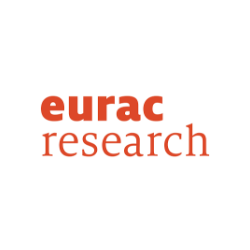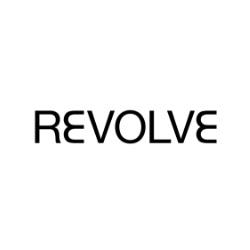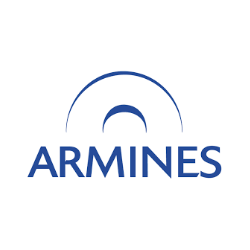About
The need for long-term, passive and nature-based solutions to avoid furthering the increase in CO2-emitting energy consumption is urgent.
Climate change has been a part of our lives for several years now. Each year is getting hotter and hotter, creating discomfort in our living spaces and exacerbating the Urban Heat Island phenomenon – occurs when cities replace natural land cover with dense concentrations of pavement, buildings, and other surfaces that absorb and retain heat.
Space cooling demand has tripled since 1990, affecting our domestic energy consumption significantly. According to a report from the IEA, 2021 was registered as one of the seven warmest years ever recorded; as a consequence, cooling accounted for 16% of buildings’ final electricity consumption.
Space cooling global context
The EU space cooling market is dominated by vapour compression technologies.
Approximately 99% of cooling consumption in Europe is provided by traditional vapour compression cooling systems. The remaining 1% of the total share is provided by thermally driven heat pumps (TDHPs, absorption, and absorption equipment). Other ‘alternative’ cooling devices are either not in the market at all (e.g. thermionic, magnetocaloric cooling equipment, etc.), or are only negligibly represented (e.g. evaporative cooling devices).
There is a lack of data and information as well as lack of awareness from the side of professionals and citizens concerning non-vapour compression solutions for space cooling purposes (e.g. regarding natural cooling, passive cooling, and free cooling solutions such as cool pavements).
Challenges
01
Identify and involve key actors.
Focusing on public authorities in municipalities, urban planners, architects, energy service companies (ESCOs) and engineering companies, energy advisors, and installers.
02
Contribute to a better understanding of technologies and measures.
Reducing space cooling demand (active and passive systems), including interventions on the levels of buildings, neighbourhoods, and urban planning.
03
Identify a set of tailored solutions and services.
Involving integrated designs and planning and the effective implementation of holistic solutions, as well as solutions geared towards multi-apartment blocks and/or groups of buildings.
04
Compare techno-economic assessments.
Comparing the technologies need to be carried out.
05
Provide recommendations – including financing schemes- for key representatives.
Focusing on policy and regulatory bodies, planners, industry and business stakeholders.
Project Concept
Training sessions
Who can participate?
- Researchers and academics
- Industry representatives: energy consultants, energy utility representatives, engineers, building/urban planners, and architects
- Building managers: real estate developers, facility managers, portfolio and asset managers
- Public administration officers
- Social innovation experts
How will our sessions take place?
Training will be carried out in different formats (online, in-person, hybrid), through interactive and action-learning techniques. Training material will include a wiki, a user manual with guidelines on use cases and exercises, as well as videos including recordings of tutorials and workshops. A ‘train the trainer’ approach will also be used, so that participants of training events will receive online support and documentation to organise further training in their home organisation.
Our events will also contain a networking element so that participants can exchange experiences, provide feedback loops to the CoolLIFE tool developers, and so that public authorities have the opportunity to compare the tool results to their local data.
Partners
EURAC
Non-profit organisation working in the field of R&D, studying technology, geography, environmental health, and social sciences.
Website: www.eurac.edu
Expertise in the project:
Project coordination and research
Advanced Building and Urban Design – ABUD
Sustainability consultancy firm specialising in innovative solutions for the built and urban environment.
Website: abud.hu
Expertise in the project:
Comfort, lifestyle and user behaviour
Institute for European Energy and Climate Policy Stichting – IEECP
Not-for-profit, independent research foundation working on science-based climate change mitigation, energy efficiency and renewable energy policy, with an international interdisciplinary team of experts since 2015.
Website: ieecp.org
Expertise in the project:
Policy and financing
REVOLVE
Communication agency fostering cultures of sustainability, offering communication services to maximise outreach and impact reporting for EU projects and other partner campaigns.
Website: revolve.media
Expertise in the project:
Communication and dissemination
Energy Economics Group – TU Wien
Group within the Institute of Energy Systems and Electric Drives at TU Wien covering several fields of research, with a focus on renewable and new energy systems.
Website: www.tuwien.at
Expertise in the project:
Technological development and assessments
e-think
Private non-profit energy research institution aiming to advance research in the field of energy economics at its interface with the environment and human society.
Website: www.e-think.ac.at
Expertise in the project:
Training and capacity building
Association pour la recherche et le développement des méthodes et processus industriels – ARMINES
Private non-profit research and technological organisation (RTO), founded in 1967 at the instigation of its partner engineering schools, the Ecoles des Mines network.
Website: www.armines.net/fr
Expertise in the project:
Technological development and assessments

Join us
Be part of our community by registering to our newsletter and get informed about upcoming training sessions about the CoolLIFE Hub and Tools.








